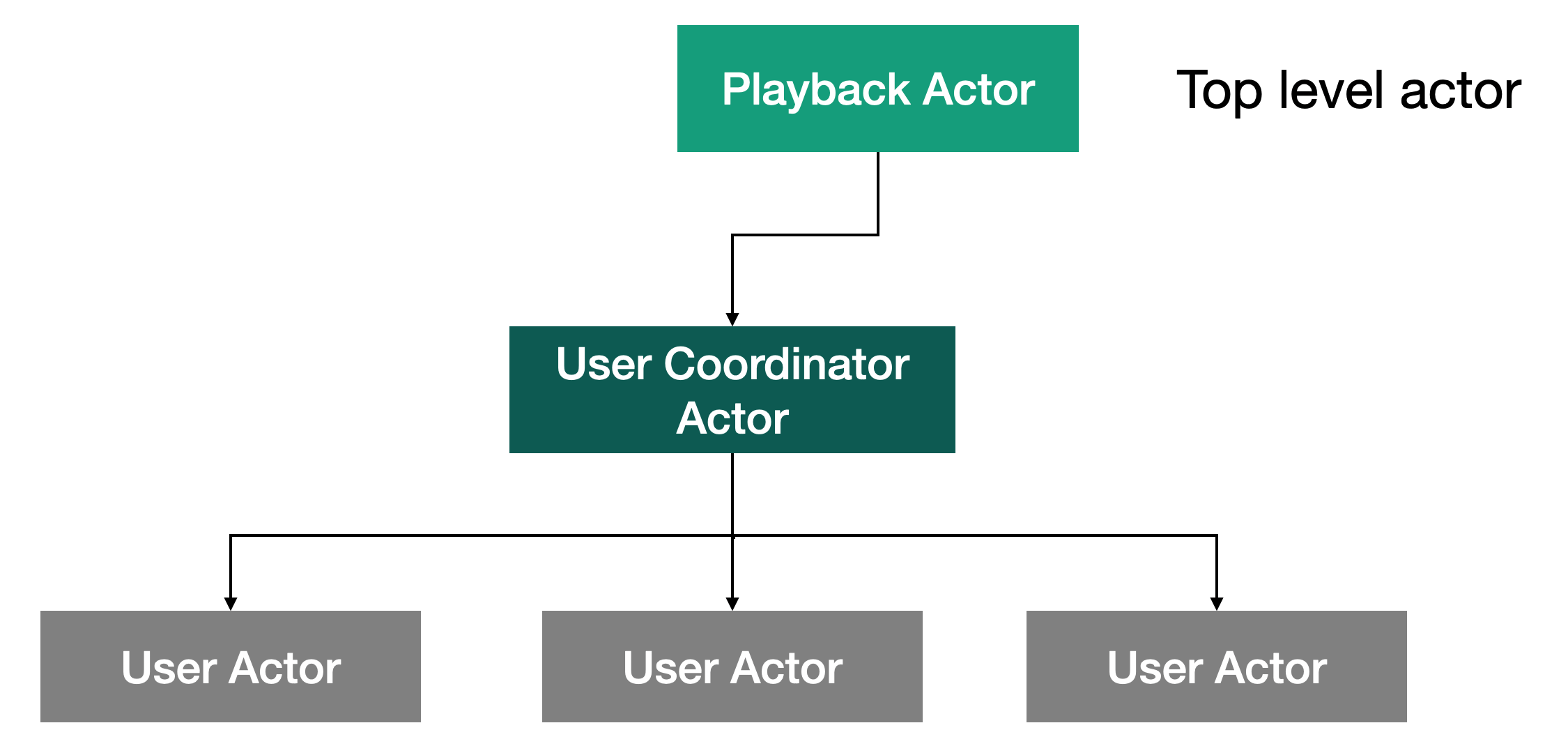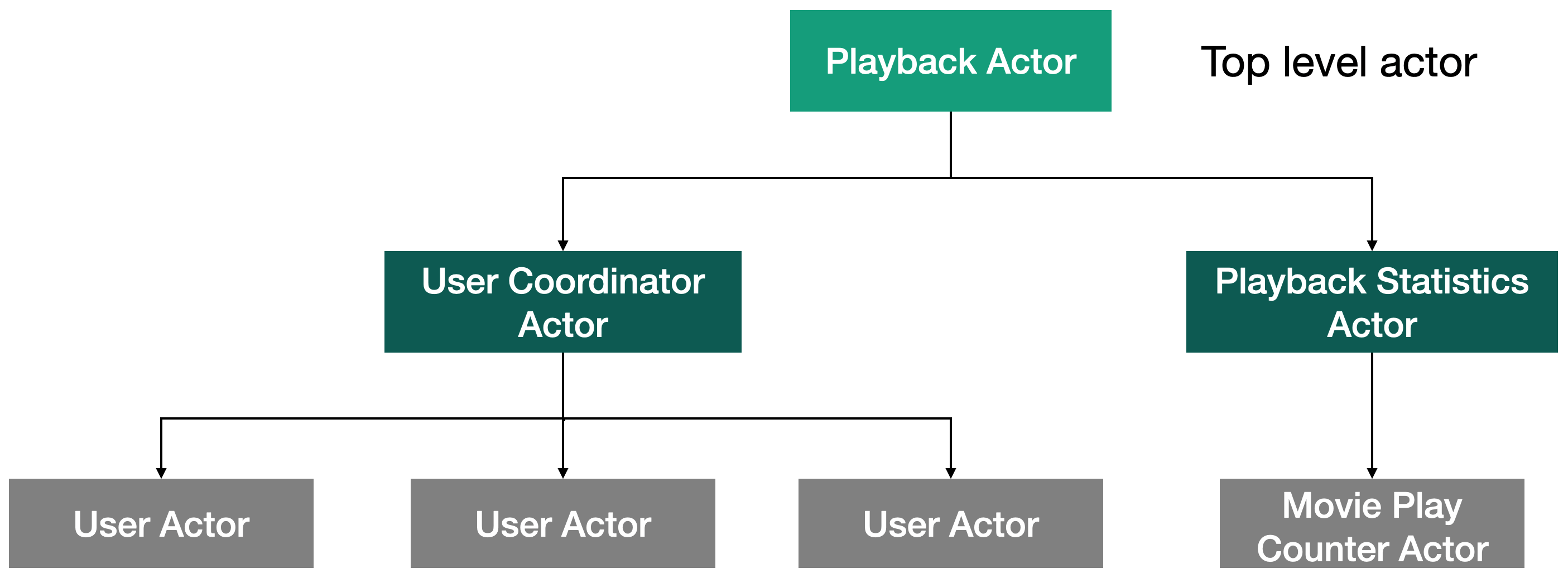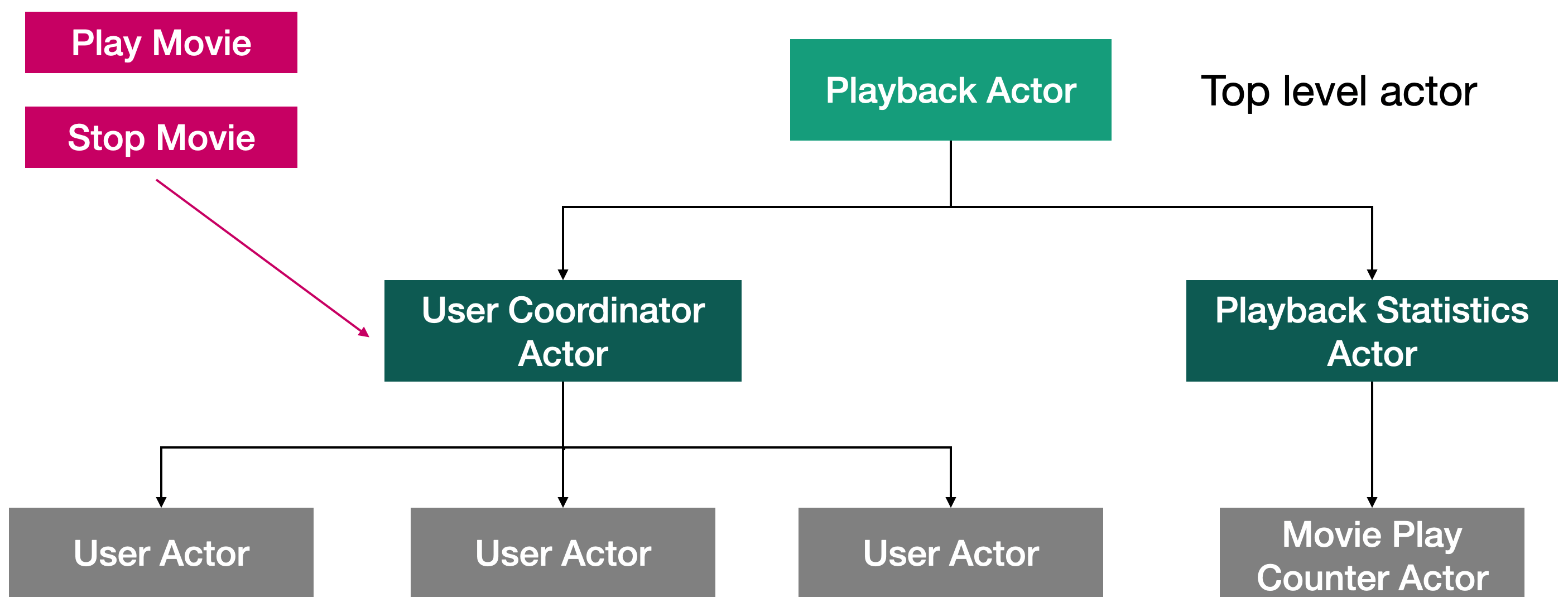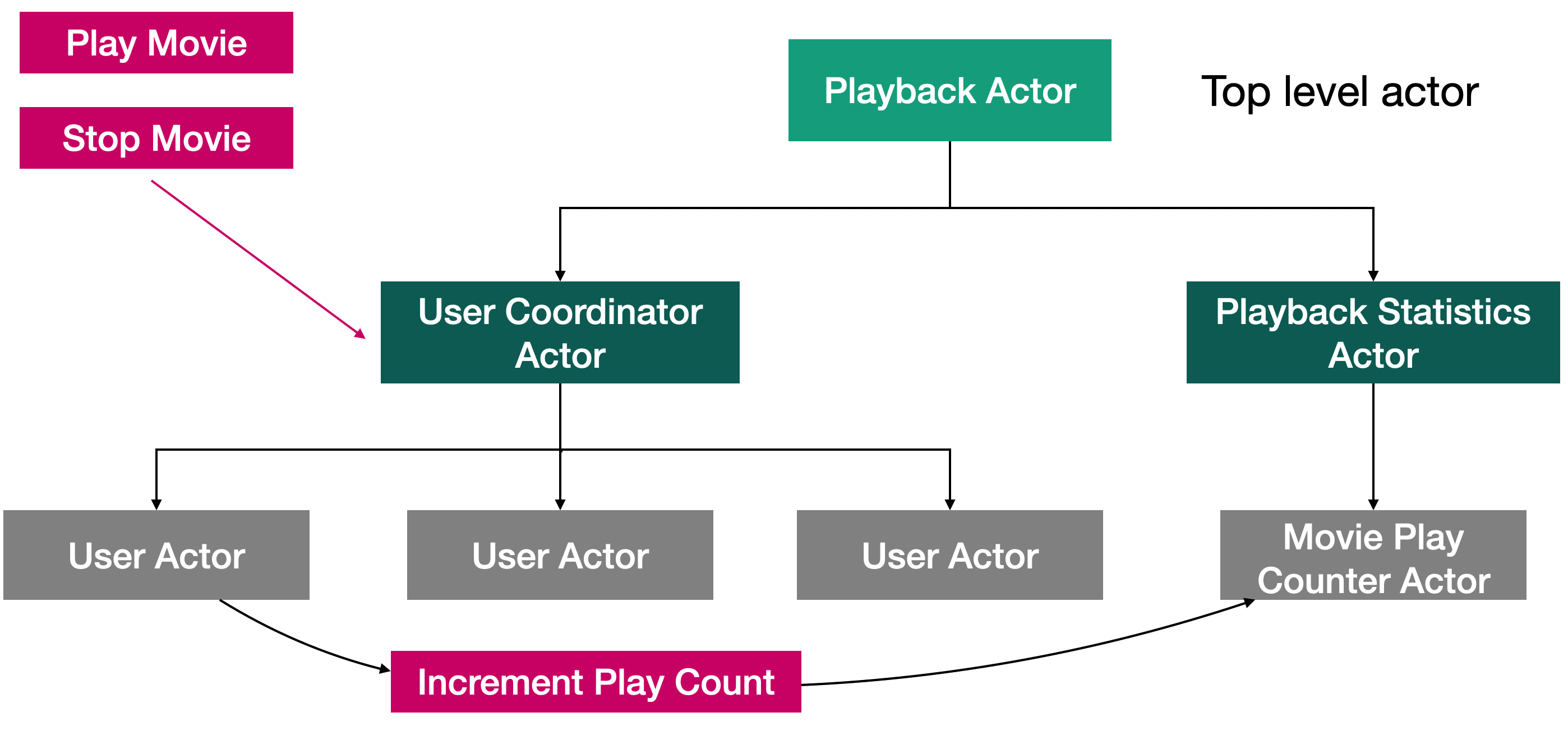Lesson 2: Overview of the application that demonstrates the supervisor’s capabilities and the actors hierarchy.
So let’s look at the hierarchy of actors that we will be creating throughout this module.
We will start creating our application with the actor that is at the top of the actor hierarchy. This actor will be called PlaybackActor (). It will be responsible directly for playing movies. This actor will have two child actors. The first child actor called UserCoordinatorActor() is responsible for creating one or more Useractors().
We create an instance of UserActor() for each end-user who watches the movie. We created the initial version of UserActor () in the previous module.

PlaybackActor() also has a second child actor called PlaybackStatisticsActor() , this actor is the parent actor for the actor MoviePlayCounterActor(). The role of the MoviePlayCounterActor() actor is to count the number of times each movie is played back.

We also have a couple of messages PlayMovieMessage() and StopMovieMessage(). These messages are used to start and stop movie playback.

These messages have a UserId, and when they fall into UserCoordinatorActor (), UserCoordinatorActor () will check if there is no suitable instance of UserActor() for this UserId, then UserCoordinatorActor() will create apropriate UserActor(). And Next UserCoordinatorActor () will send messages to the desired UserActor() to start or stop playback of the movie.

When UserActor() starts playing the movie, it will create an instance of the message IncrementPlayCountMessage() and send it MoviePlayCounterActor() . In turn, MoviePlayCounterActor() will increase the movie playback counter by one. This way, MoviePlayCounterActor() will track how many times each movie has been played back.